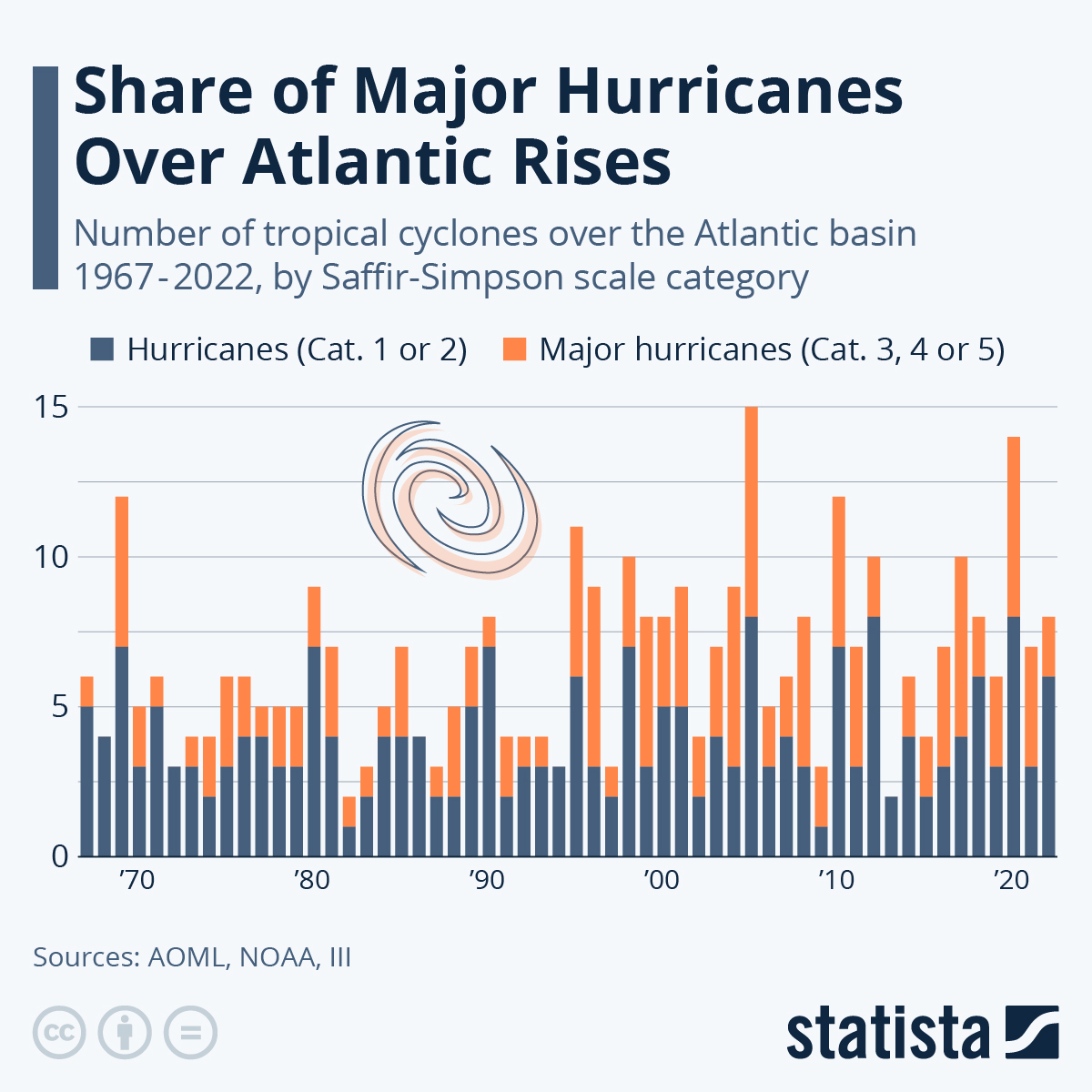The Atlantic Hurricane Season Starts Today
The National Oceanic and Atmospheric Administration predicts near-normal conditions for the 2023 Atlantic hurricane season which starts today.
NOAA is forecasting five to nine hurricanes to occur in 2023, out of which one to four could turn into major hurricanes.
As Statista’s Katharina Buchholz reports, one of the factors that could suppress the 2023 hurricane season is the likely start of an El Niño phase after three years with the La Niña phenomenon, which shifts colder temperatures and stronger trade winds to the Pacific, therefore exposing the Atlantic to warmer and less linear wind pattern more favorable for hurricane formation. If an El Niño phase were to start this year, it would shift cooler and windier conditions over to the Atlantic. However, above-normal ocean temperatures in the Central Atlantic band and the Caribbean have the power to strengthen hurricanes this season. NOAA concludes the two factors could offset each other, but if El Niño failed to form despite favorable conditions, the high ocean temperatures could make for an intense 2023 season.
While the 2022 season and its eight hurricanes – including Hurricane Ian and Hurricane Julia – was somewhat above average compared with recent years, 2020 was an extremely busy year for hurricanes. A total of 14 formed over the Atlantic basin – the most since 2005, the year of Hurricane Katrina. Six of those were major hurricanes, including Hurricane Laura, Hurricane Eta and Hurricane Iota. In 2022, only two out of eight hurricanes in the Atlantic basin were of category 3 or above on the Saffir-Simpson scale, which is in contrast with the recent trend of 40-50 percent of all Atlantic hurricanes being classified as major ones.
You will find more infographics at Statista
While in the 1970s and 1980s, the share of major hurricanes stood at an average of around 30-33 percent of all Atlantic hurricanes, this had increased to an average of 40-50 percent per year in the 2000s and 2010s. The change translates to an average of 1.6 major hurricanes occurring per year in the 1970s and 1980s and 3-4 occurring annually today. Climate change has been identified as a reason why stronger hurricanes occur.
More evidence that hurricane seasons are changing can be deferred from the timing of named storms. 2021’s first storm – Ana – was named on May 22 after forming near the Bahamas. This made 2021 the seventh consecutive year a named storm formed before the start of the official season on June 1. The first named storm of 2022 occurred on June 5 and none was named as of June 1 in 2023.
2005, when Hurricane Katrina struck New Orleans, was the worst hurricane seasons since 1851, records from the National Oceanographic & Meteorological Laboratory at NOAA show. Hurricane Katrina was just one of seven major hurricanes observed in the Atlantic basin that year. 2005 was the year with most hurricanes in the Atlantic (15), followed by 2020 (14), 2010 (12, including Hurricane Sandy) and 1969 (also 12).
Tyler Durden
Thu, 06/01/2023 – 20:40
via ZeroHedge News https://ift.tt/E1ahr2F Tyler Durden
